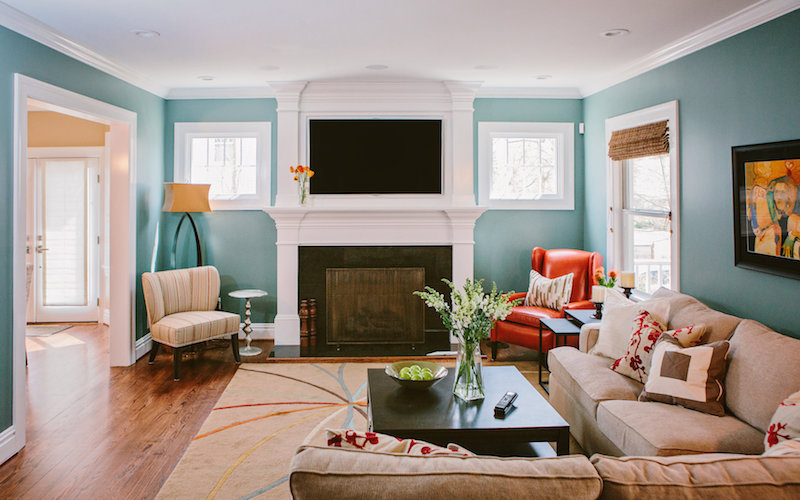By Jamie Briesemeister
Most people are surprised when I tell them that my first career was as a speech-language pathologist, working with children who had language delays and disorders. Owning a home automation and technology company is a far cry from working with children who are struggling to communicate. My current role as a home technology provider, however, is ironically similar: determining what my clients want or need when they don’t have the words for it.
The world of home technology and custom integration is more about relationships, listening, and problem solving than it is about selling a cool gadget. Or rather, I feel it should be more than pushing the next cool “thing.” When our sales focus – or design intent – is built around the next new, shiny object (or trend, technology, or whatever), we lose focus on our clients’ priorities and may miss the mark when we suggest a possible solution, product,
or design.
Instead, we need to ask more questions, listen deeply, and dig further into our clients’ wants and needs. Most people don’t know exactly what they want, nor do they know all that’s available to them. A television commercial, a visit to a friend’s vacation home, a stroll through a big box retailer, or a show on HGTV can be all that it takes to plant the seed of “I want that, too.” But, do our clients know how to articulate what will fulfill their needs? Is the product they saw on TV or in the store the right one for them? As design-minded solution providers, it’s our mission to figure this out. We must read between the lines and discover their unspoken need.
Start by Discovering More
I have a project with a couple, one of whom recently said, “Just because I like it quiet, doesn’t mean I like it silent. Just because I say I don’t watch TV, doesn’t mean I never watch TV.”
You may think to yourself, “So, what the heck do you really want, then?” Stop right there before you get too frustrated and remember that the client doesn’t know what you know, and they may not know how to request what you have to offer. Instead of putting the onus on them to clearly spell out their needs, ask specific questions, such as:
“Can you tell me more about what it means to you to have a ‘quiet’ home?”
“What comforts you about a quiet home? Conversely, when you think of a ‘loud’ home, what does that look like?”
“When you do watch something, what do you watch it on? Tablet, computer, mobile device…”
“What kinds of websites or media are you interested in consuming (podcasts, YouTube, documentaries) and on what devices?”
“What, specifically, do you not enjoy about television?”
All of these questions dig deeper, beyond simple one-word responses that we often get from our clients. Keep your questions open, friendly, and specific to dial in on their interests. Get clarity, and then polish until the vision is crystal clear.
Here’s another comment that I typically get in sales: “I just want it to be simple.” Nearly any home technology integrator looks at what they have to offer as simplifying the technology experience for clients, so what does it mean to be “simple?” Does simple mean more of a streamlined aesthetic and unified interface (i.e. it looks simple)? Or does it mean a “button” that does everything for them (i.e. it is simple to activate)? Perhaps it means that it is simple in cost and doesn’t need any custom technology to make it work well (i.e. native apps for smart devices and no custom integration). Maybe it means they want a simple installation (i.e. no dust-no fuss).
When you feel you have discovered the intent and understand their interests, ensure you have captured all of the details by restating and reframing. “I understand that you want this to work as simply as possible. What I hear from you is that you want one ‘button’ that accomplishes all of your tasks. Is that correct?” It may take a short or lengthy conversation to fully dial in on the details and we, as salespeople and design consultants, should provide the time to fully identify their needs. Sometimes, trying to define “simple,” isn’t so… simple.
Listen to the Non-Words
If a picture is worth a thousand words, crossed arms, a non-verbal pause, a sigh, or a sideways glance are worth a thousand dollars (or more). Being in tune with your client allows you to “hear” what they aren’t saying (little hesitations or sparks of delight) and use it your advantage in developing the best solution and, subsequently, closing the deal.
Can you hear when she doesn’t like something and he is really gunning for it? What about when she loves your high-end automated shades, and he doesn’t want to pay for it? Or, those times when he is interested in the best performance, but his partner hates how it looks? Nonverbal communication happens in an instant and requires that you have the perceptual ability to “hear” and “read” all of the nonverbal cues that are around you. If your sales tools are developed to use technology, then ensure more of your time is spent making eye contact and focusing on your client, instead of looking at your screen. Otherwise, you may miss something along the way.
Discover, get clarity, and be aware of the nonverbal messages around you. You will have more success when you slow down and listen intently. Consider all viewpoints and needs of the system, ask probing questions, and pay attention to your clients’ quiet cues. Their unspoken need is present. Can you hear it?
Photos courtesy of Integration Controls








